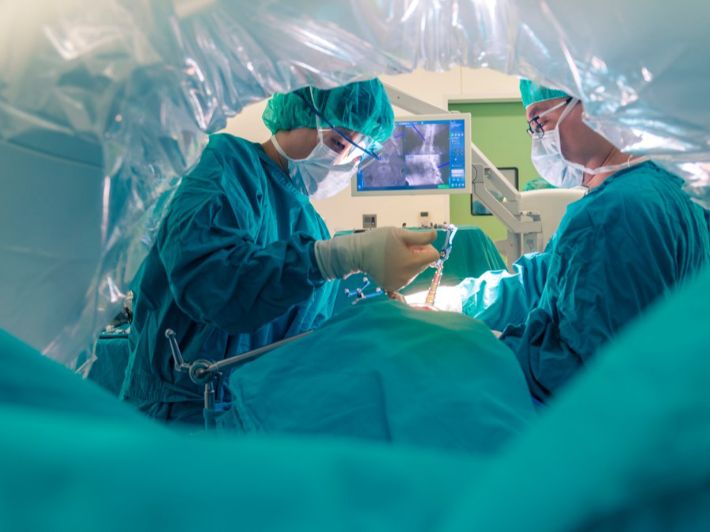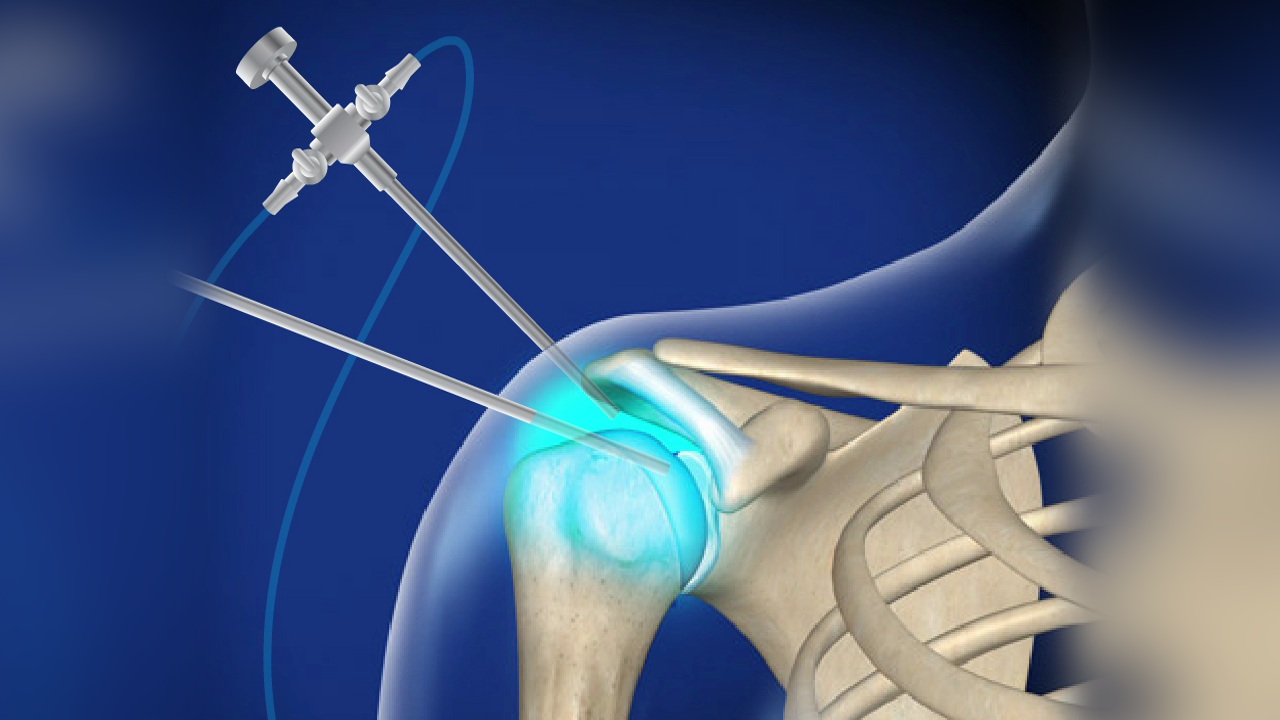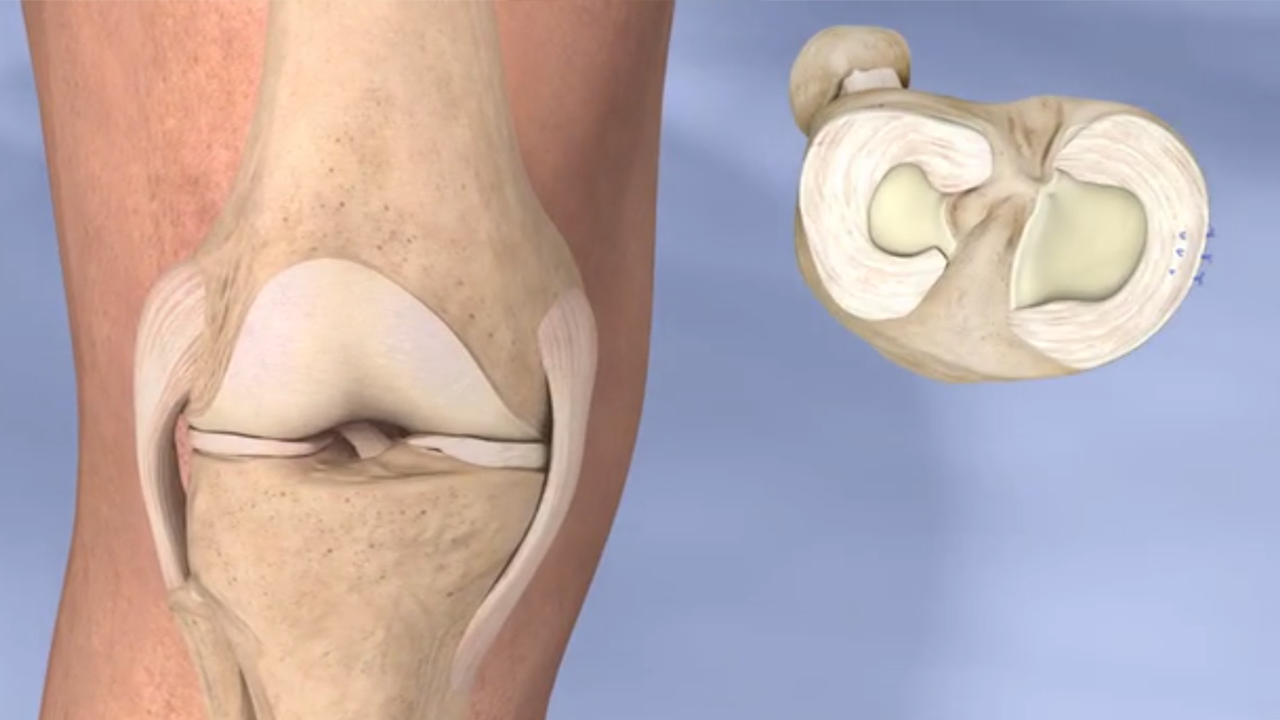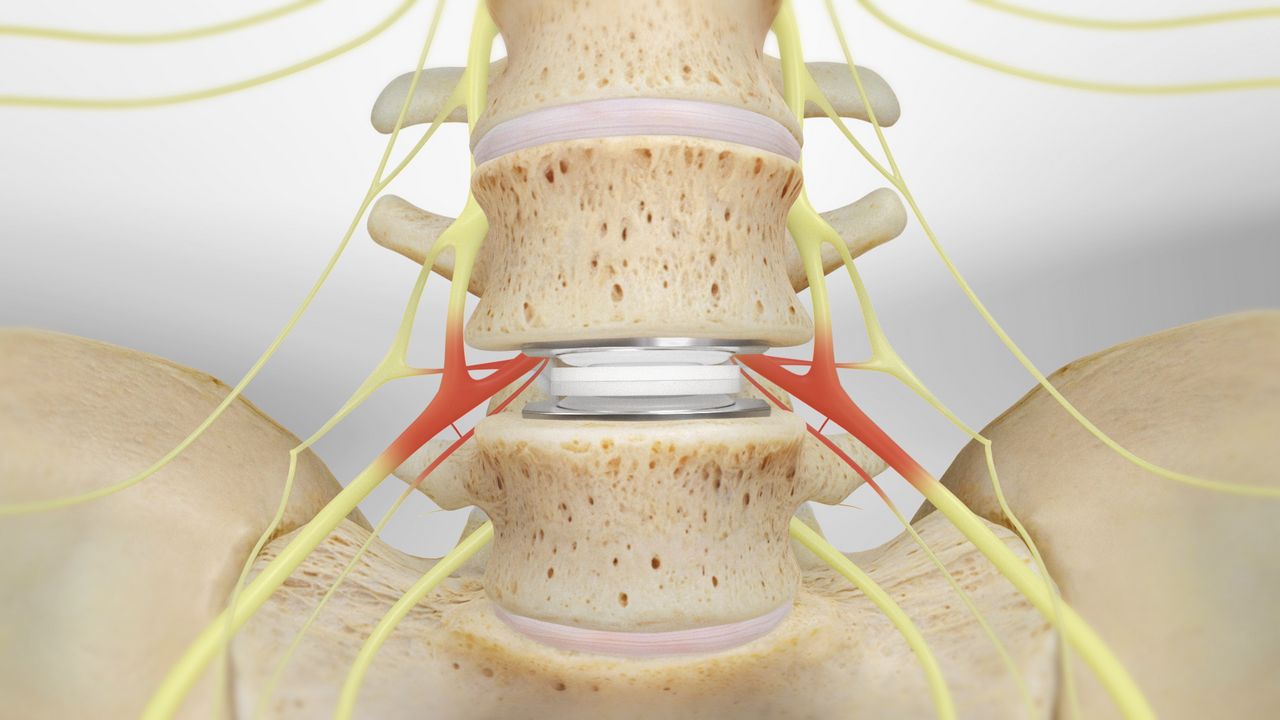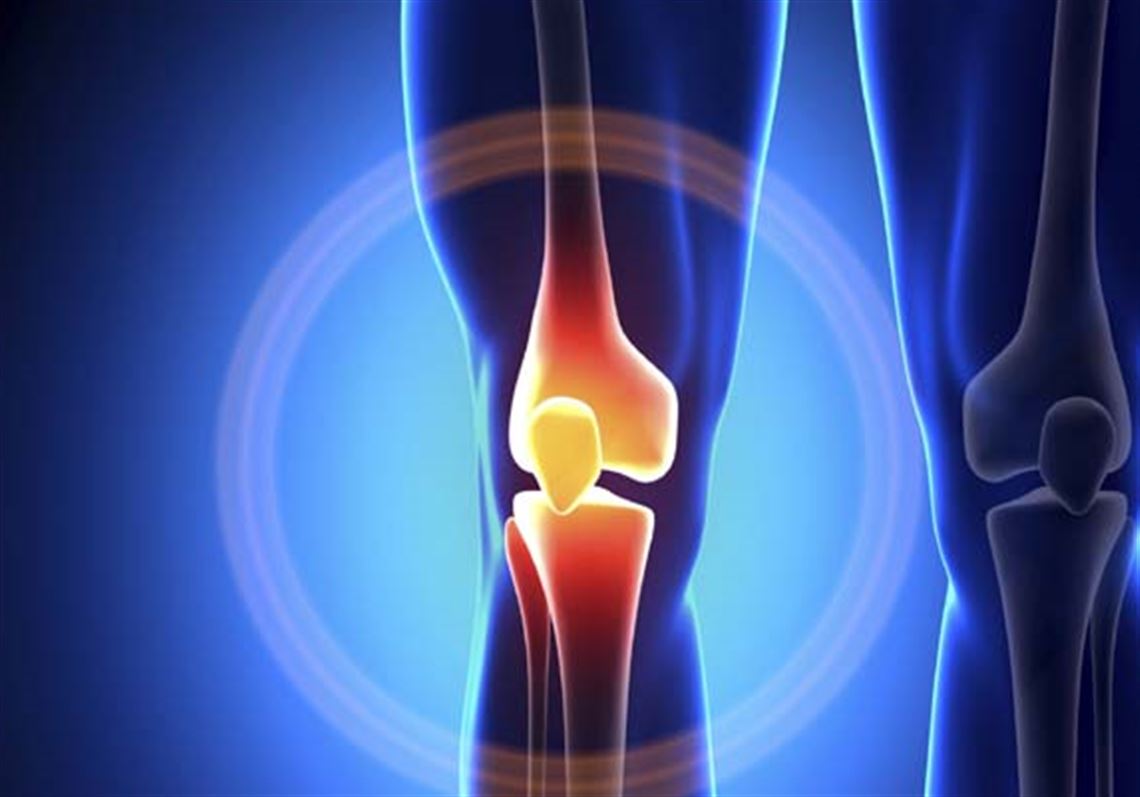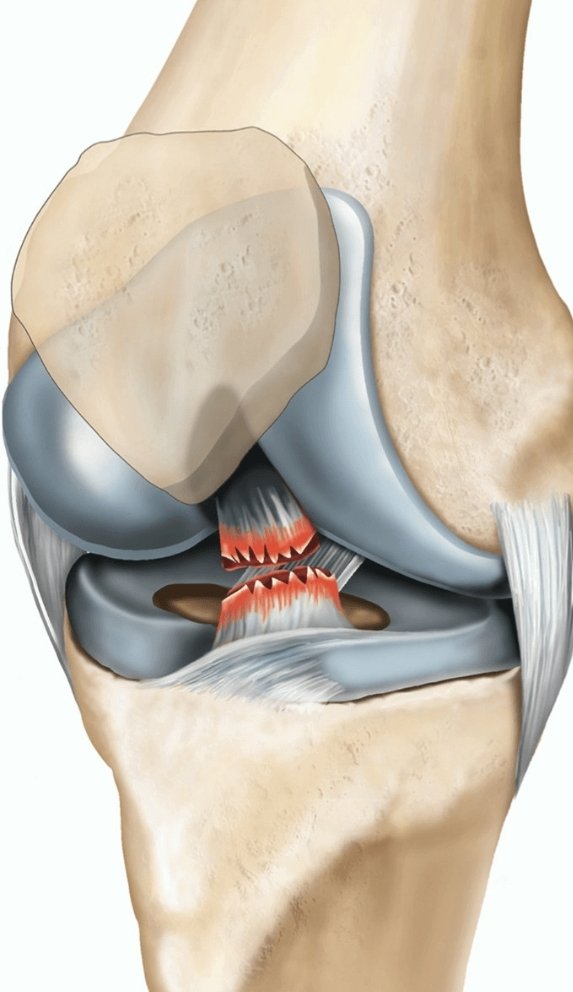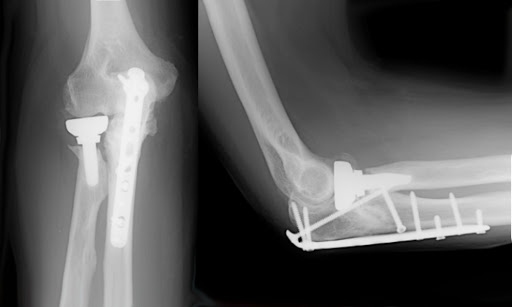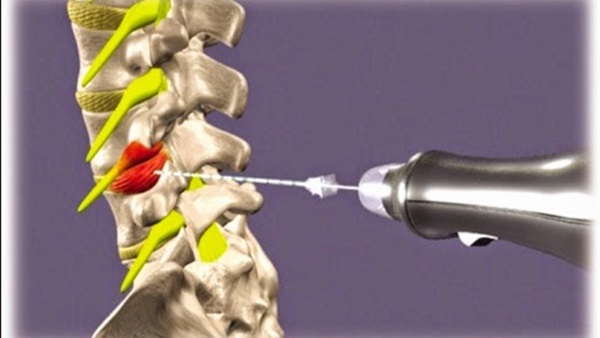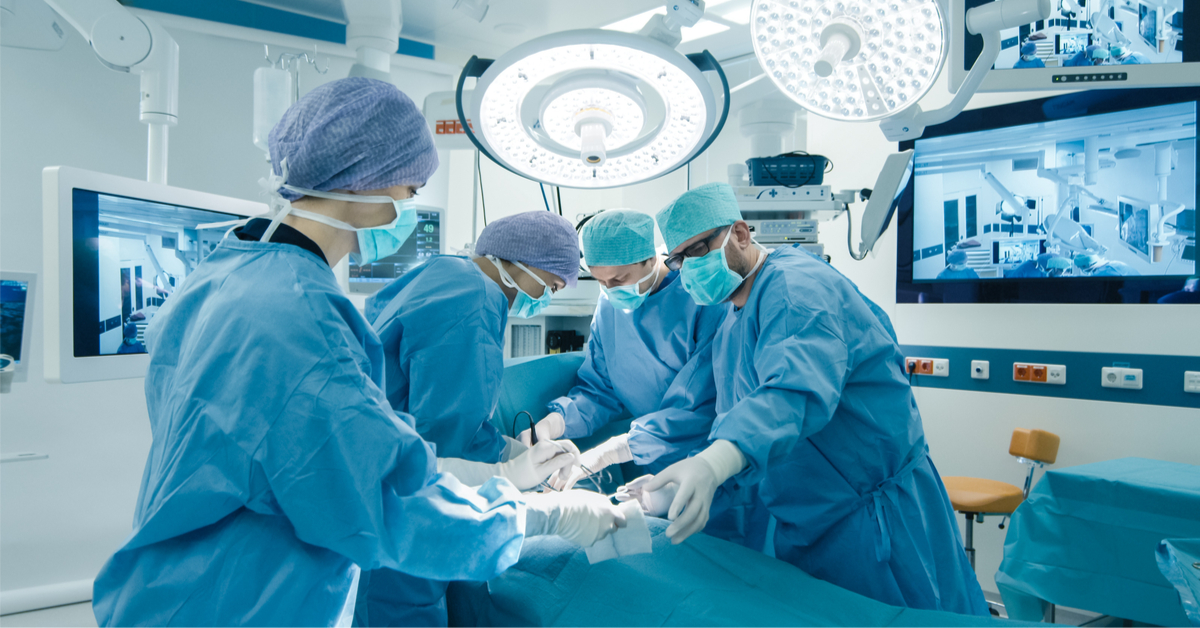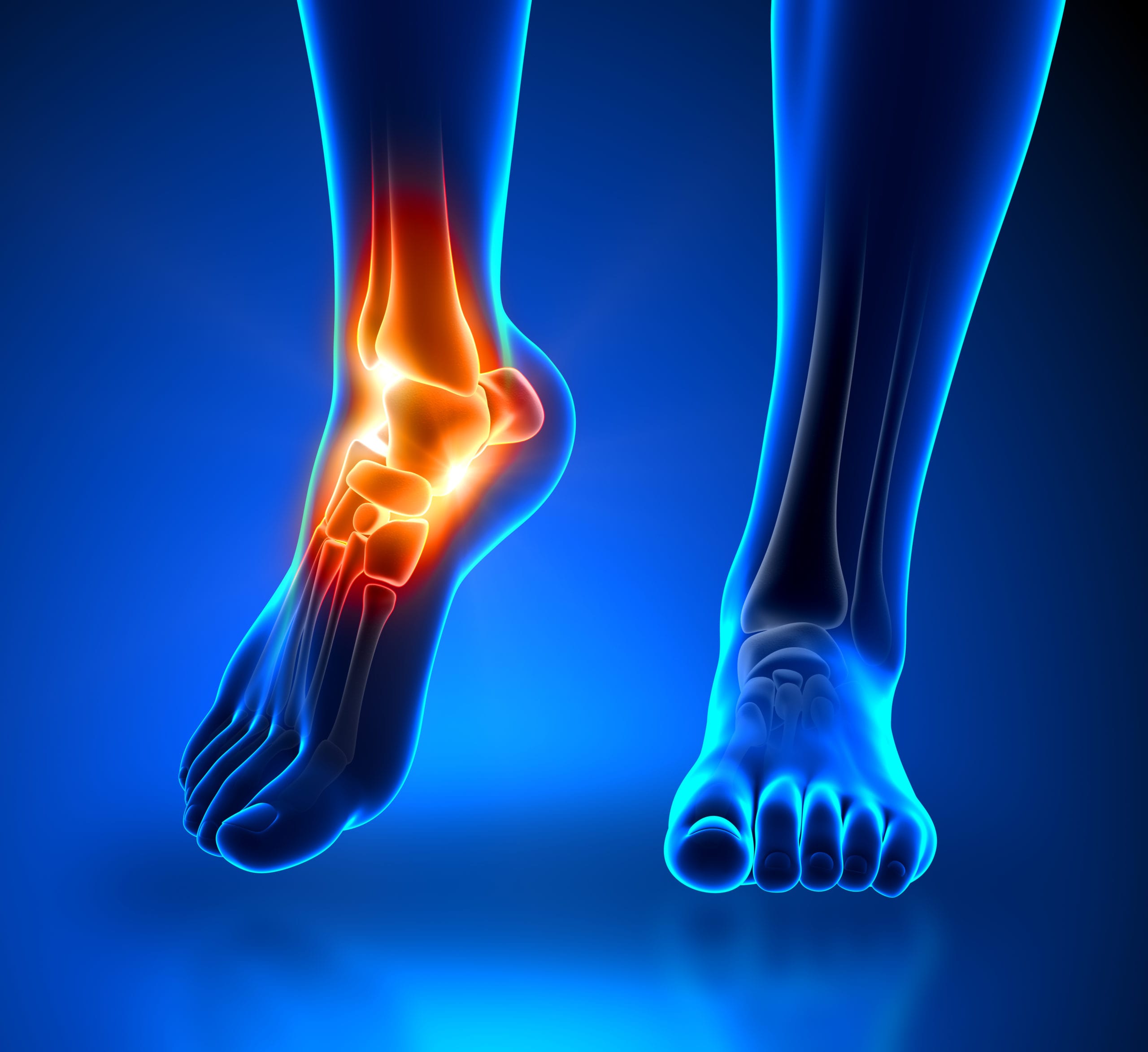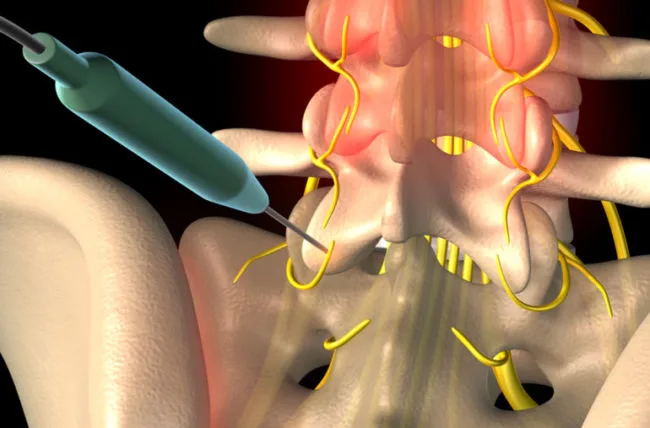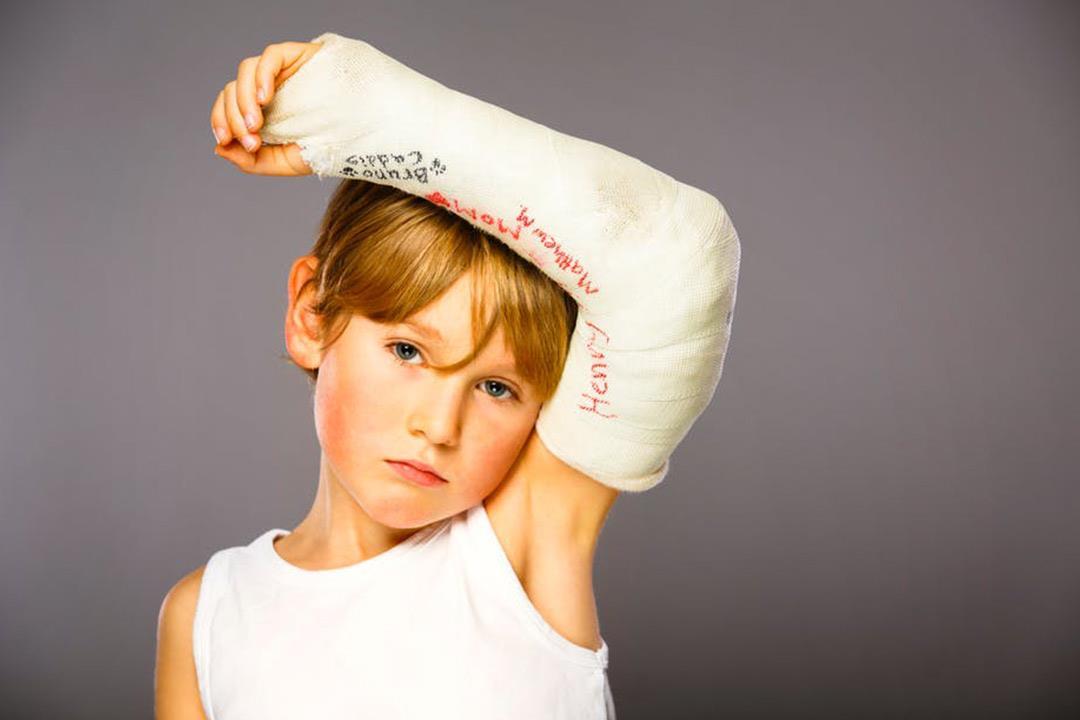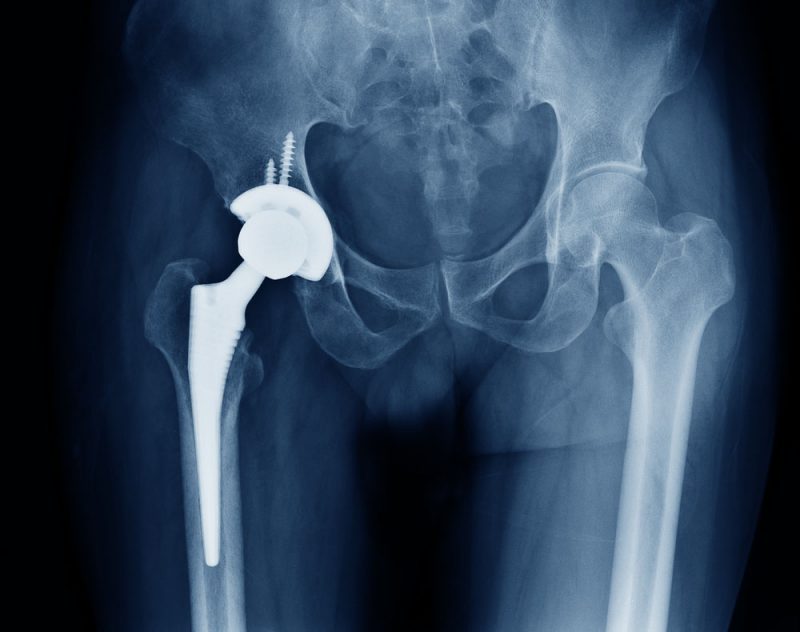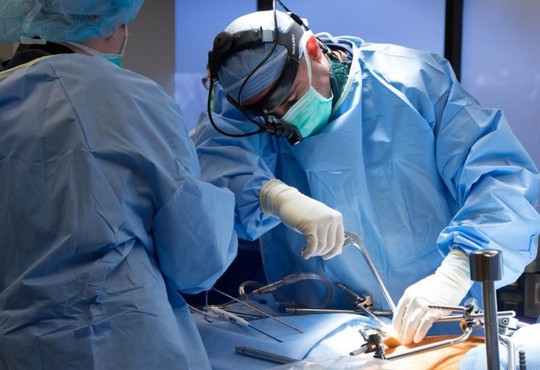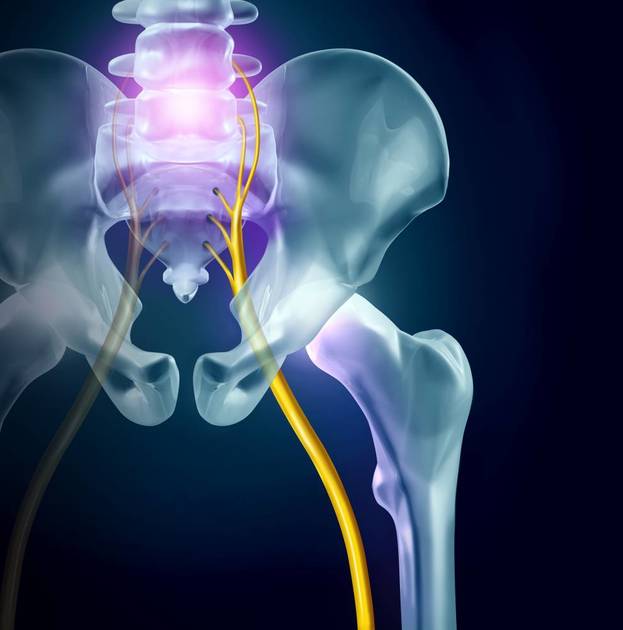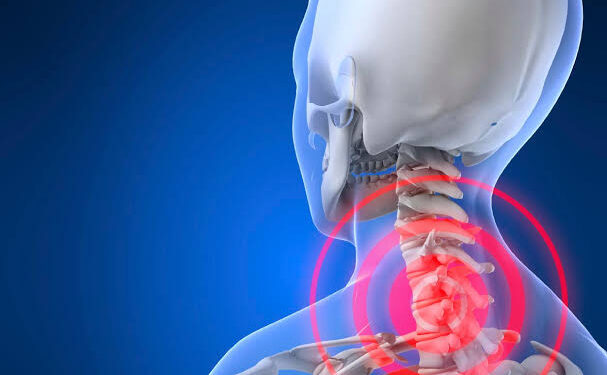Knee Joint Replacement Surgery
Knee Joint Replacement Surgery, Some individuals may experience a specific injury in the knee joint or suffer from roughness, necessitating a knee joint replacement after other treatment methods have failed. In this article, we will explore the details related to knee joint replacement surgery, its significant results, potential complications, and the best doctor to perform it.
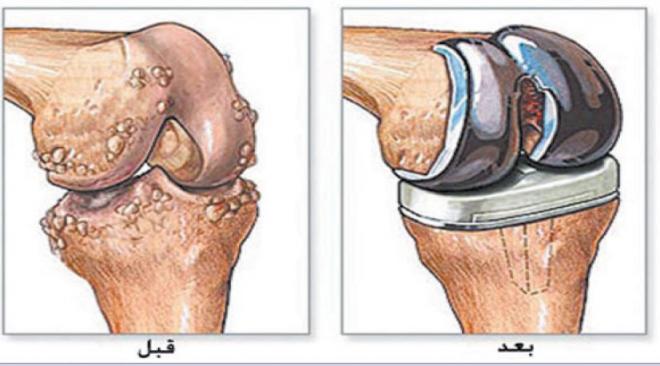
Knee Joint Replacement Surgery
When the joint is damaged, the cartilage, as well as the beginnings of the connected bones, are affected, leading to bone erosion and resulting in roughness accompanied by joint pain. In such cases, joint replacement becomes essential, and doctors recommend a complete knee joint replacement to restore harmonious movement.
The surgery involves replacing parts of the knee with artificial components, consisting of a metallic part for the thigh joint and another for the shinbone, connected using medical cement. This treated material helps glue the joint parts together, enabling them to function naturally once again.
The expected lifespan of a knee joint replacement ranges from 15 to 20 years, making it more suitable for the elderly since it requires special care and should not be subjected to excessive pressure. It is crucial for the patient to maintain a suitable weight after the surgery, as individuals with obesity are more prone to complications in the knee.
Reasons for Knee Joint Replacement
The human body has multiple joints, ranging from 200 to 300, and this number can vary due to fusion in some joints, altering the existing count. Joints play a vital role in connecting bones and enabling movement and normal human activity. One of the largest and strongest joints in the body is the knee joint, bearing a significant portion of a person’s weight.
The knee joint can bear up to five times a person’s weight, making it a crucial pivot point in the body. Over time, the joint may suffer from specific injuries, leading to roughness and cartilage erosion, causing severe knee pain and difficulty in movement.
A patient may require a knee joint replacement for various reasons, with the most common being to alleviate pain resulting from arthritis. Typically, a patient needs to undergo knee joint replacement surgery if they face difficulties in walking, climbing stairs, or getting up from a chair. Prepare to enhance your quality of life and confidence with Dr. Amr Amal’s knee joint replacement surgery, offering innovative solutions and satisfactory results to meet your individual needs.
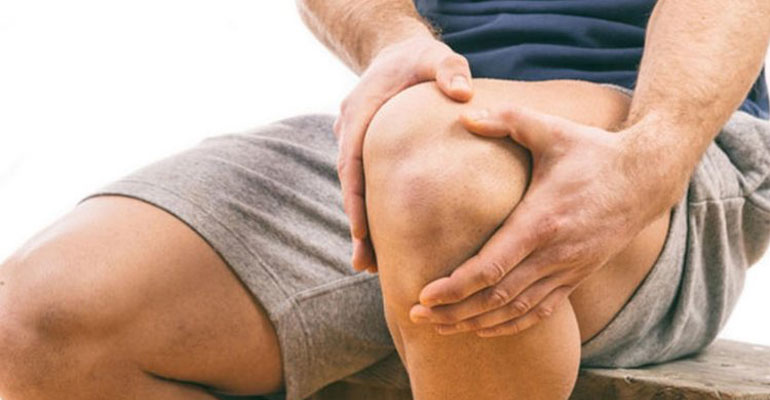
What are the causes of roughness in the knee joint?
There are several reasons that can affect the knee and cause it to become rough, including the following:
Osteoporosis: When a person is affected by osteoporosis, damage can occur to the cartilage lining the knee, resulting in pain. Knee inflammation: There are several types of inflammations that can affect the knee, including rheumatoid arthritis, degenerative inflammation, and gout, which negatively affect the joint and cause roughness. Exposure to an accident: Often, a person may be exposed to an accident or a fracture in the knee, which affects the joint and causes damage to the tissues, ligaments, and also the cartilage, resulting in roughness and cartilage atrophy. Treatment methods for the knee joint
There are several ways to treat knee roughness or damage to the knee cartilage, including surgical and non-surgical methods. The treating doctor first conducts the necessary medical examination for the patient to determine the current condition of the joint, and then develops a treatment plan, which is initially non-surgical -mostly- to work on improving the joint.
Non-surgical treatment methods
The patient can start receiving the appropriate treatment after diagnosis, and the treatment steps are as follows:
Taking pain relievers to reduce pain. Taking anti-inflammatory drugs in case of any type of inflammation. Maintaining a lower weight to reduce the load on the joint. Using appropriate sports exercises for the patient to improve the condition. Using crutches or supportive devices to reduce the load on the knee. Using injection therapy, which provides flexibility to the knee and facilitates movement. Surgical treatment methods
In some other cases, the damage to the knee may be more severe, so the treating doctor may resort to surgical intervention, either by replacing the damaged cartilage, either completely or partially, and in other cases, changing the knee joint and replacing it may be the best solution for the patient, depending on the condition and the doctor’s accurate diagnosis.
Symptoms requiring knee joint replacement surgery
When is knee joint replacement surgery performed? It is possible to replace the knee joint for more than one reason, depending on the condition of the joint and the extent to which it has been affected after the injury. The following cases are the most in need of knee joint replacement:
Wear and tear in the cartilage lining the knee. An injury to the knee that has resulted in severe pain. Having significant difficulty walking or bending the knee. Severe stiffness in the knee and inability to move it. Having severe inflammation in the knee, resulting in severe pain.

Pre-Knee Joint Replacement
It is necessary to properly prepare for the surgery to avoid complications and also to improve the success rate of the operation. Dr. Amr Amal offers some advice that should be followed before surgery:
- Clarify the medical history and the medications being used to the treating physician.
- Perform a comprehensive examination of the knee through X-rays and physical examination.
- Use magnetic resonance imaging (MRI) to determine the current state of the bones and the extent of their degeneration.
- Conduct complete blood tests, liver and kidney functions, and urine tests.
- Use anti-inflammatory medications for a week before surgery to prevent infection.
What is Knee Joint Replacement Surgery?
Good preparation before knee joint replacement is considered one of the essential and important steps before surgery. This preparation is carried out by Dr. Amr Amal and his accompanying medical team for the patient a sufficient time before the operation. The surgical procedures are as follows:
- The patient undergoes appropriate anesthesia, which is usually general anesthesia.
- A cut of about 15 cm is made in the front part of the knee.
- The bones are prepared, the damaged part of the cartilage is removed, and the thigh and leg bones are prepared for placing the artificial joint.
- The artificial parts of the joint, which are bendable, are placed and the doctor ensures their safety and suitability for the body.
- The surgeon secures the joint with the special medical cement for this surgery.
- The doctor sterilizes the surgical site and stitches it up.
- The patient then returns to the recovery room to complete the procedures.
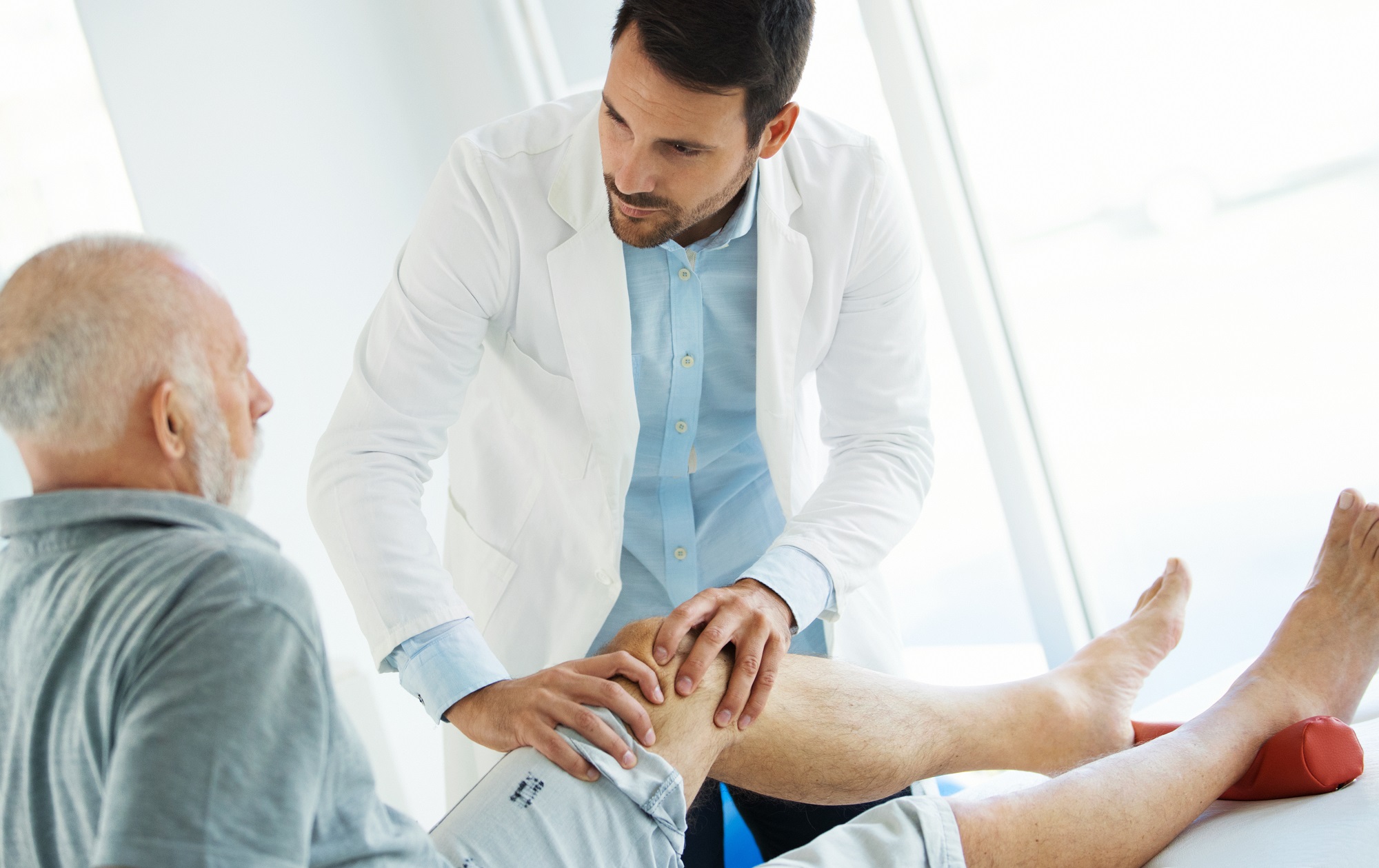
What is the Success Rate of Knee Joint Replacement Surgery?
“Get ready to benefit from comfort and high quality at Dr. Amr Amal’s clinic for knee joint replacement. We provide comprehensive care and continuous follow-up to achieve optimal results.”
The success rate of knee joint replacement surgery is high, exceeding 90%. After the recovery period, the patient can resume their life normally, with attention to medical follow-up, which helps the patient start walking and moving without feeling any disturbance.
How Long Does Knee Joint Replacement Surgery Take?
The knee joint replacement surgery may take from 6 to 8 hours. Afterward, the patient returns to their room for the examination of vital signs and to ensure their safety and the success of the operation. During this time, after waking up from anesthesia, the medical team provides some important instructions that the patient must follow after the surgery. Prepare to enjoy pain-free and worry-free days with the advanced knee joint replacement surgery at Dr. Amr Amal’s clinic.

After Knee Replacement Surgery
The patient begins to follow post-operative instructions during the recovery period, which takes some time. We explain some of the advice provided by Dr. Amr Amal, a consultant orthopedic and joint surgeon at Ain Shams University. He enjoys a good reputation and widespread fame in this field due to his efficiency, skill, and extensive experience in performing this type of surgery with great success. The process involves the following:
- Getting plenty of rest and lying down with the leg extended, and staying in the hospital for 3 to 5 days.
- Taking prescribed medications regularly.
- Using cold and hot water compresses, which help reduce swelling associated with the surgery and speed up the recovery process.
- The patient should try to move the knee on the day after the surgery and assess their ability to walk.
- Using crutches in the initial period after the surgery to reduce the load on the knee.
- Avoiding strenuous exercises such as running or jumping in the first few weeks after the operation.
- Utilizing a comprehensive physical therapy program to prepare the knee to bear pressure and return to its normal ability to perform its function.
Physical Therapy After Knee Replacement
Physical therapy after knee replacement surgery is one of the essential steps in the treatment journey. It helps the patient achieve greater comfort and prepares the joint to function normally without the need for assistance or the use of supportive devices. One of the most important parts of physical therapy is performing appropriate exercises for the condition. After starting the physical therapy program, the patient will gradually feel improvement and may be able to exercise for 20 to 30 minutes two or three times a day. They also need to walk for half an hour twice a day. The physical therapy program includes the following:
- First Day: The patient is in the hospital, and the physical therapist guides them on how to get out of bed, bear weight on the new knee, and possibly take a few steps on a treadmill. They also assist with exercises performed beside the bed.
- Second Day: The patient continues to practice exercises to strengthen the muscles that support the knee, practice bending and straightening the knee, and flexing and relaxing the thigh muscles. They also walk a greater distance using a walker or crutches.
- Third to Fifth Day: The patient may be in the hospital, at home, or at a rehabilitation center. With some assistance, they may be able to climb a few steps of a staircase.
- Fifth Day to Fourth Week: Exercises are gradually intensified to strengthen the knee. During this period, the patient may walk longer distances with the help of a walker or crutches and then may only need one cane or crutch to walk. They can do this as soon as they are able to stand for more than ten minutes. They may also use an exercise bike, initially pedaling backward, and then forward when the knee is strong enough.
- After Four Weeks: The doctor may suggest adding light weights to increase resistance.
If you want to learn more about the physical therapy sessions applied to the knee and whether or not you will feel pain afterward, click here.
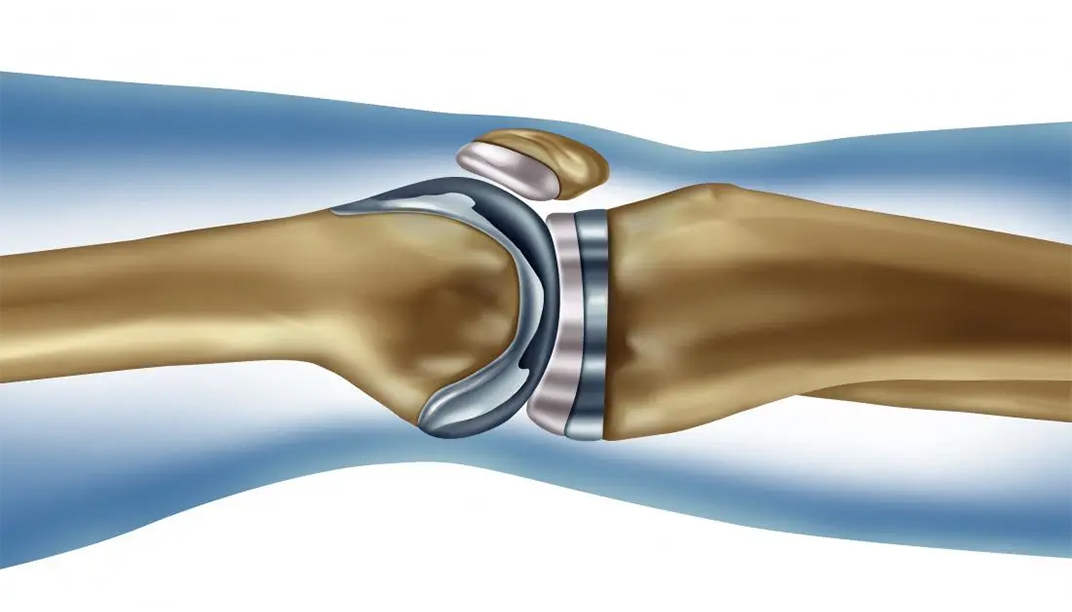
Knee Joint Replacement Exercises
Exercises after knee joint replacement surgery play a significant role in helping the patient achieve a faster recovery and enhance the ability to move the artificial knee joint naturally without discomfort. The patient can perform the following exercises:
- The patient can work on bending and straightening the knee several times.
- The patient can stand, bend the affected knee, and then straighten it again.
- The patient should use appropriate pillows to provide support for the joint.
The patient must avoid excessive pressure after the surgery or engaging in specific exercises such as squatting, which increase the load on the knee. It is important to apply cold water compresses to reduce swelling that may occur after performing exercises in the first few weeks post-surgery. The patient should adhere to all the exercises recommended by the doctor for at least two full months after the surgery to achieve outstanding results.
Recovery Duration After Knee Joint Replacement Surgery
The specific duration for recovery varies from person to person, depending on the patient’s health condition, age, and weight. Generally, the patient can start returning to work while avoiding pressure on the joint or engaging in strenuous movements or exercises six weeks post-surgery. The recovery period may continue for up to 6 months after the surgery.
Risks of Knee Joint Replacement Surgery
There are potential risks associated with knee joint replacement surgery, which can occur in rare cases. However, by following the instructions provided by Dr. Amr, the patient can reduce the likelihood of experiencing complications and avoid exposure to risks.
Is Knee Joint Replacement Surgery Dangerous?
Yes, knee joint replacement surgery can pose risks to the patient and may lead to general complications. The complications associated with knee joint replacement surgery include:
- Infection at the site of the surgery.
- Stiffness in the knee.
- Loosening of the artificial joint.
- Injury to the nerves, ligaments, or arteries in the knee.
- Bleeding at the surgical site.
- Inflammation of the wound, which may extend to the internal tissues and bones.
- Numbness at the site of the wound.
- Incorrect positioning of the patella.
- Fracture of the bone around the artificial joint.
- Development of a blood clot in one of the legs.
- Allergic reaction to the materials used in manufacturing the replacement joint.

Pain After Knee Joint Replacement Surgery
How long does the pain last after knee joint replacement surgery? This question is frequently asked by many patients who have already undergone knee joint replacement surgery. The pain after the surgery may take some time, but it can be managed with painkillers, whether they are topical or other types, and must be under medical supervision to prevent the patient from experiencing further complications. The pain can last from 7 to 15 days after the surgery. If the patient does not feel improvement by then, they should consult their doctor immediately. So, do not suffer from joint pain any longer; take a positive step towards healing with Dr. Amr Amal and his innovative procedure.
Cost of Knee Joint Replacement Surgery
The price or cost of knee joint replacement surgery can depend on the examinations and X-rays performed before the surgery, the cost of the surgery itself, the surgeon, the anesthesia used during the procedure, and also the post-surgery costs. These details should be determined with the hospital and the treating physician before undergoing the surgery. The cost of knee joint replacement surgery in Egypt ranges from 100,000 to 150,000 Egyptian pounds.
Will the Patient Return to Normal After Knee Joint Replacement?
It is important for the patient to follow the instructions provided by their treating physician, as this helps in improving the patient’s condition and regaining their ability to move normally again. However, this process requires some time after the surgery, so it is important to maintain the patient’s condition, adhere to exercises, and follow the physiotherapy and rehabilitation program in order to return to their normal state prior to the surgery.
How Long Does an Artificial Joint (Prosthesis) Last?
The lifespan of an artificial joint varies from person to person, but most types are efficient for about 15 to 20 years. During this period, the patient can live a normal life and engage in most activities they used to do without feeling any pain. Discover comfort and an active life anew with the knee joint replacement surgery through the expertise of Dr. Amr Amal.
When Can the Patient Start Walking After Knee Joint Replacement?
The patient can start walking on the first day after the surgery to ensure the joint’s condition and the patient’s safety. However, it is important to use crutches to avoid full weight-bearing on the knee joint, which could cause severe pain. Discover personal care and innovative techniques in knee joint replacement surgery at Dr. Amr Amal’s clinic, where we guarantee comfort, beauty, and healthy functionality for our patients.

Swelling after Knee Joint Replacement Surgery
It is possible to experience swelling in the knee after undergoing a joint replacement surgery, resulting from the accumulation of fluids around the affected area. However, the treatment is straightforward and includes taking appropriate pain relievers and using ice packs to reduce swelling. Discover the best way to regain your strength and mobility with the knee joint replacement surgery under the supervision of Dr. Amr Amal.
Factors Determining the Range of Knee Flexion Patient’s Ability to Bend the Knee Before Surgery
If the patient was suffering from severe stiffness in the knee joint prior to undergoing the joint replacement surgery, the tissues surrounding the joint, such as muscles and tendons, may lose a significant part of their flexibility, hindering the ability to bend the knee extensively. Typically, these cases require long periods of exercises to regain the knee’s flexibility and improve its bending capability.
On the other hand, in cases where there was no stiffness before the surgery and the patient had a normal range of motion, the artificial knee is likely to move well in a short time, and these patients do not face any issues with movement restrictions.
Increase in Patient’s Weight
One of the significant factors that affect knee movement after surgery is the patient’s weight. If the patient is overweight, with excess fat in the thigh and leg areas, it can result in reduced knee movement due to the thigh colliding with the leg while bending the joint. Conversely, individuals with ideal weight tend to have better knee flexibility.
Inflammation and Swelling in the Knee Joint After Surgery
It is normal to experience swelling in the knee post-surgery, which may continue for several weeks, reducing the range of movement. However, following the doctor’s prescribed treatments and using ice packs can reduce swelling, allowing for better knee flexion.
Psychological Issues and Disturbances
The patient may feel anxious about bending the joint, fearing potential damage or the surgical wound reopening, or stitches tearing. In such cases, the doctor should reassure the patient on how to handle the new joint and prescribe pain relief medications to prevent any pain during knee flexion.

Is there an alternative to knee joint replacement surgery?
There are several other methods for treating an affected knee joint, but it primarily depends on the condition of the joint and the extent of the damage sustained. The appropriate treatment procedures are determined after diagnosing the patient and understanding the current state of the joint and the required treatment methods.
Non-surgical treatment methods include the following:
Physical exercises: Physical exercises help in strengthening the muscles, supporting the knee, improving its flexibility, and reducing stiffness. Physical therapy: Physical therapy contributes to restoring knee movement, reducing swelling, and eliminating the pain experienced by the patient. Weight loss: Being overweight is extremely harmful as it puts pressure on the knee joint and increases wear and tear. Therefore, the patient should follow a suitable plan to reach an ideal weight and follow a healthy diet. Using assistive devices: It is possible to use crutches or compensatory devices such as knee braces that help to relieve pressure on the affected knee. Medication treatment: There are several types of medication that help rebuild cartilage, such as those containing glucosamine, or using non-steroidal injections to reduce inflammation, or hyaluronic acid injections that help to lubricate the joint.
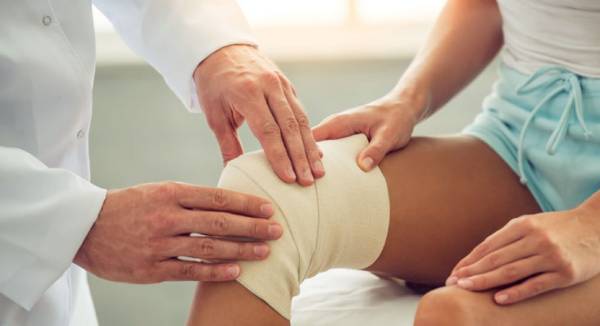
Permanent knee roughness treatment with herbs
There are some types of herbs that help alleviate the symptoms of knee roughness, but of course, they are not a substitute for medical treatment. Before using any type of these herbs, you should consult a doctor. Among them are the following:
Turmeric: Turmeric contains a compound known as curcumin, which is an anti-inflammatory agent. It can be taken as a dietary supplement or added to food. Ginger: It is also an anti-inflammatory substance that helps relieve pain associated with knee roughness. It can be used by consuming dried or fresh ginger or adding it to beverages.
You should take into consideration that using herbs requires a lot of caution to prevent interactions with medications the patient is taking. Therefore, consulting a doctor comes first and foremost. If you want to learn more details regarding the possibility of treating knee roughness with oils and herbs and the followed methods, we advise you to read this article.

